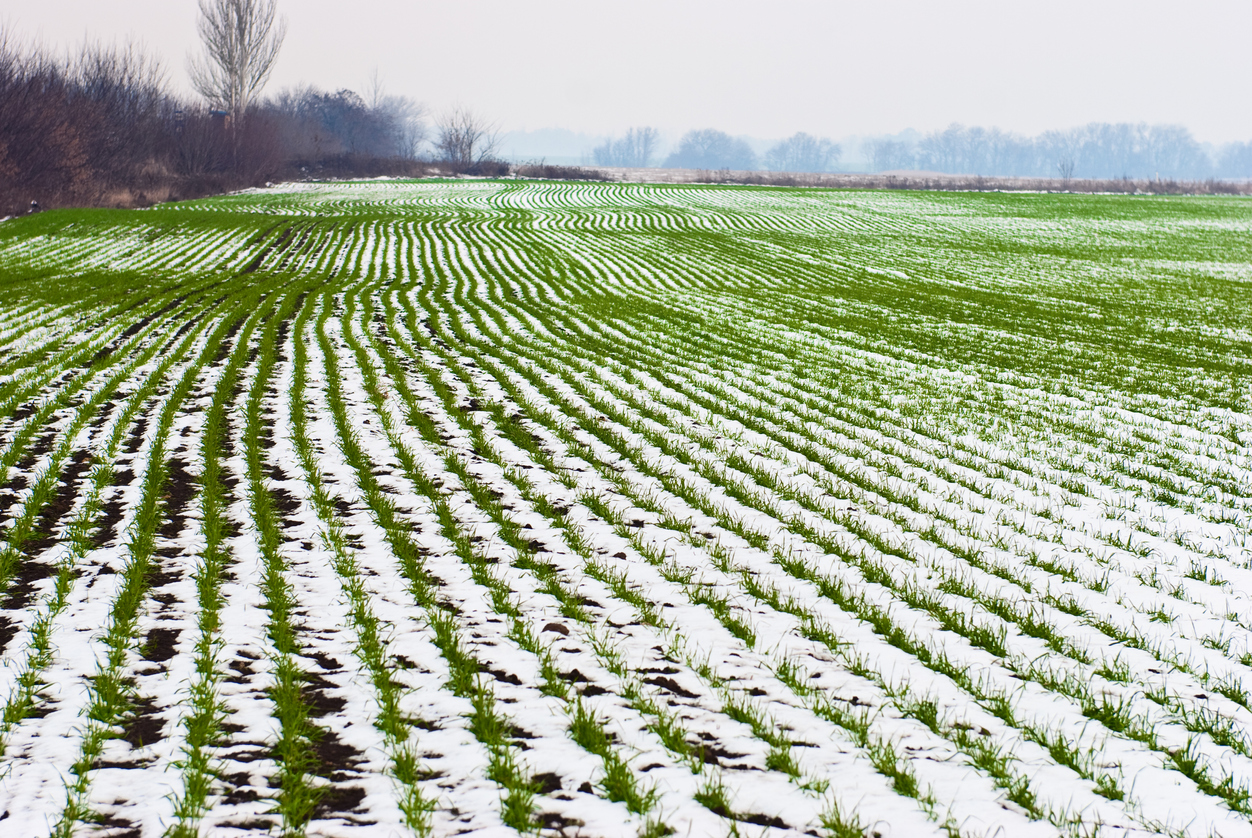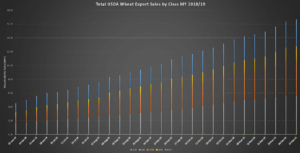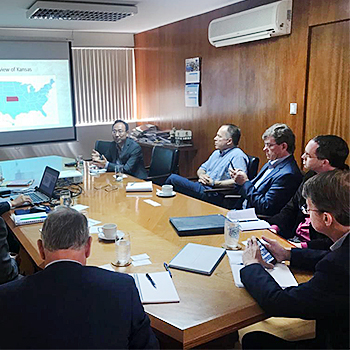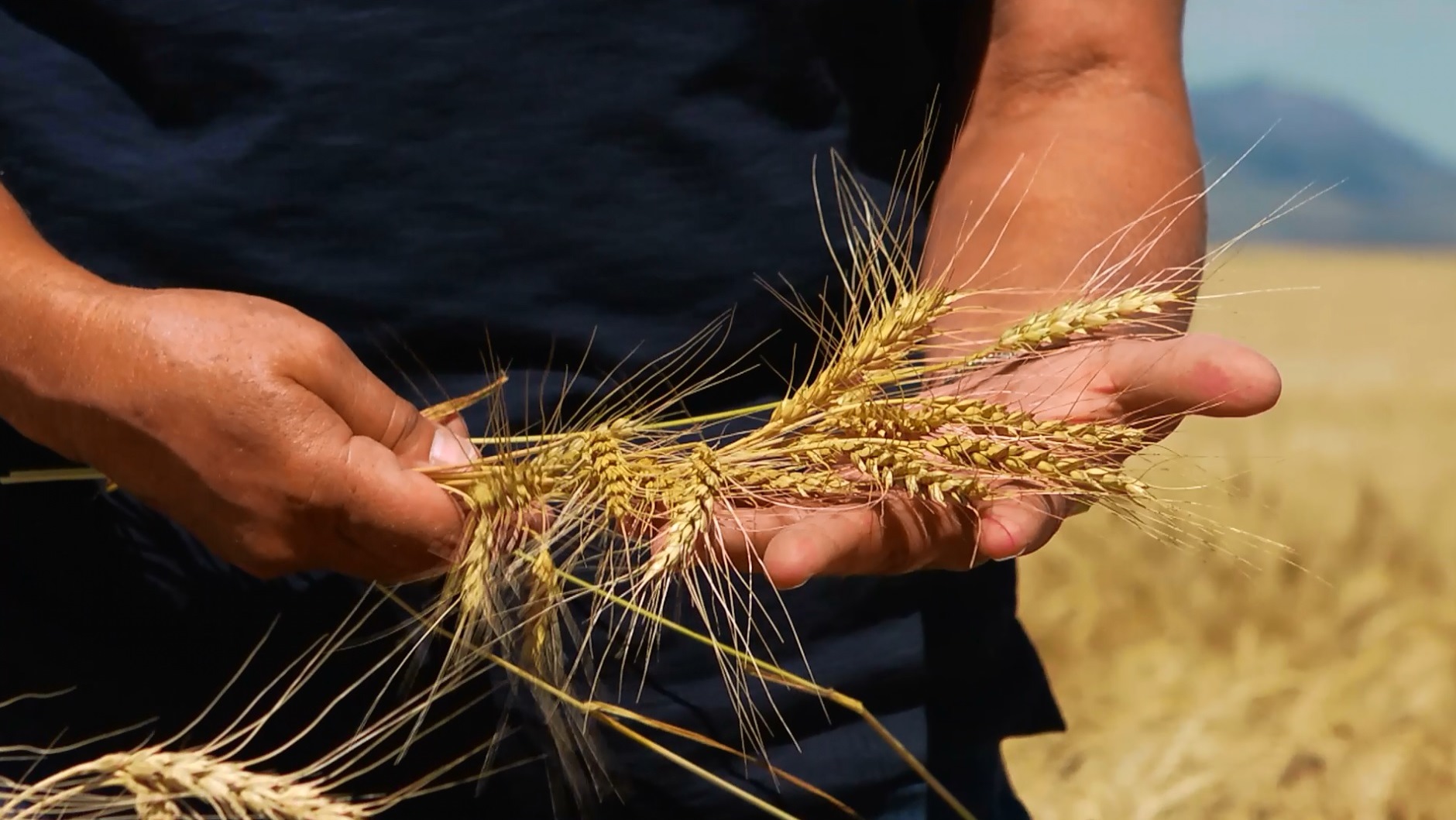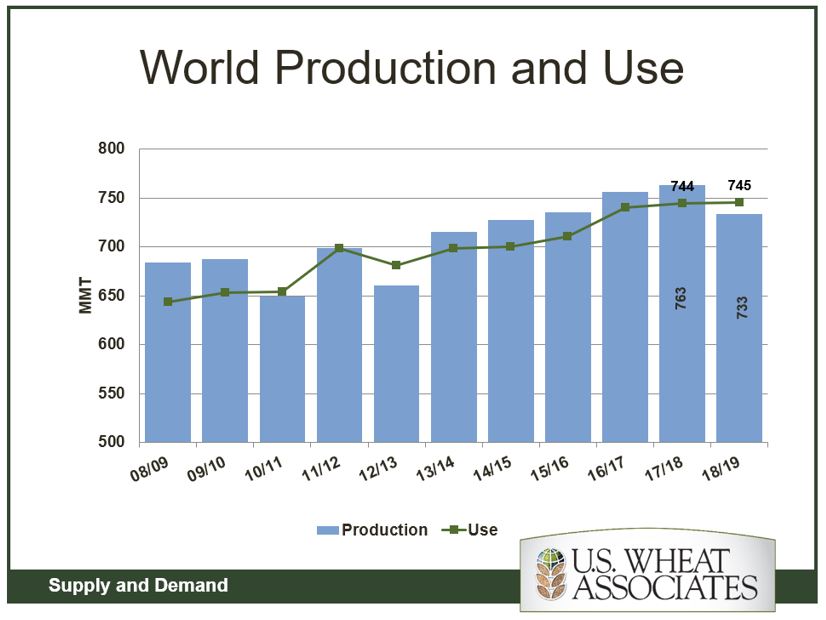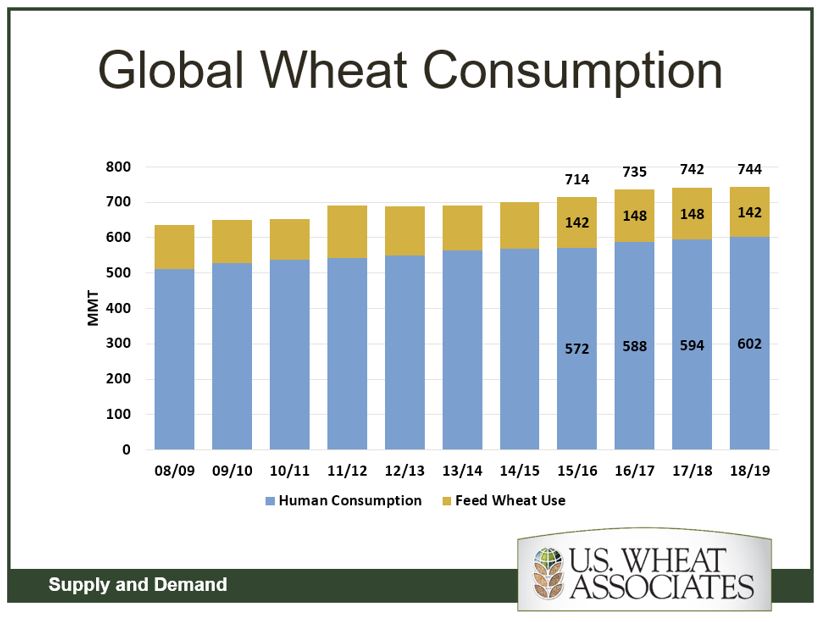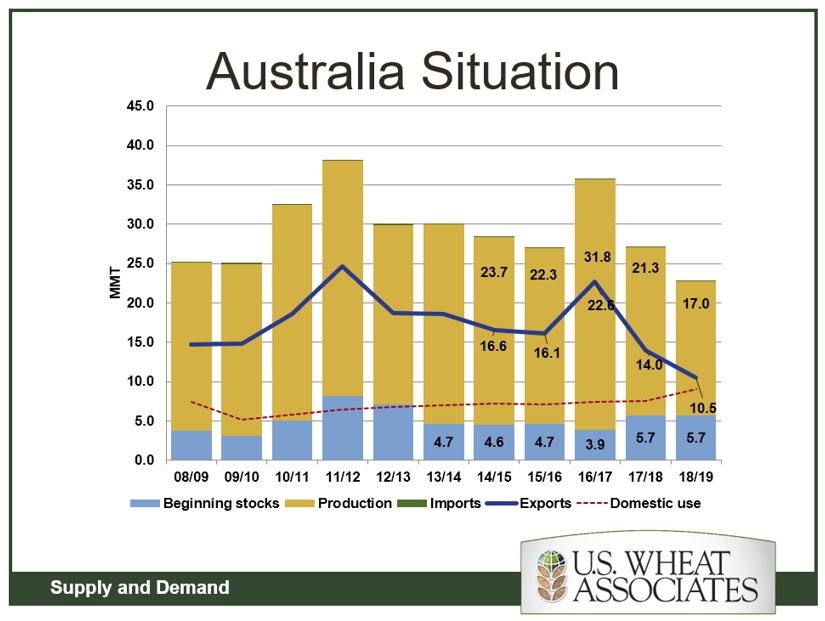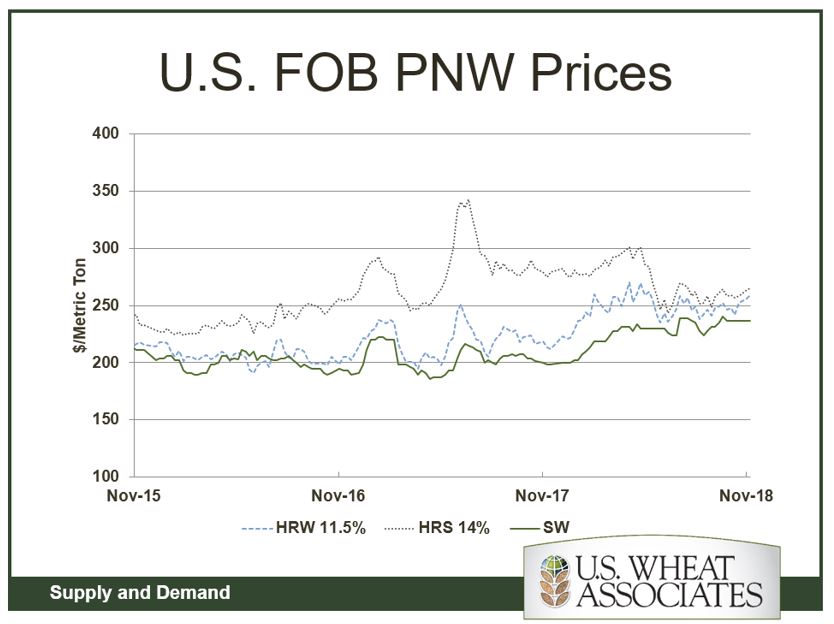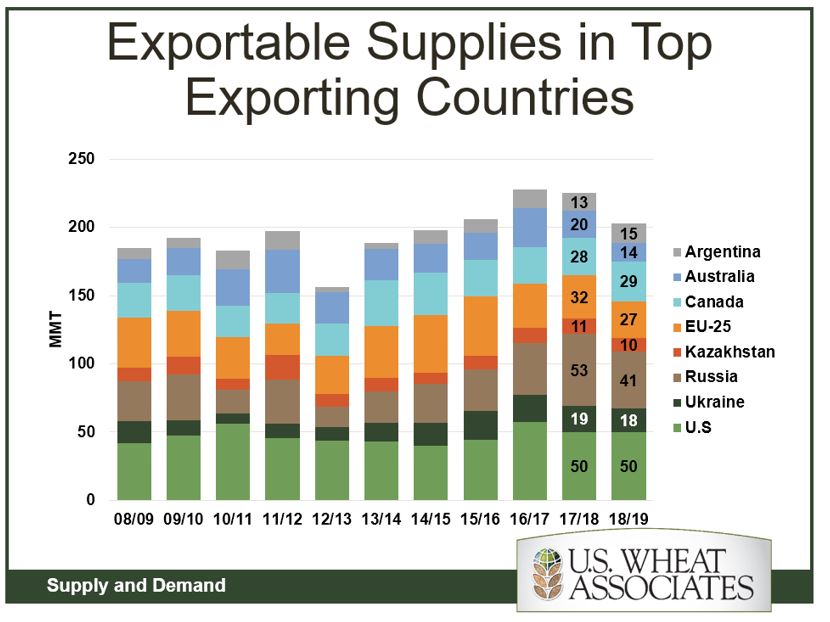Recent news and highlights from around the wheat industry.
Quote of the Week: “It’s been gratifying to witness the world’s receptiveness to U.S. farm and food products. Consumers worldwide have a true affinity for the American brand and immediately recognize the safety and quality of our products.”
— The Honorable Ted McKinney, USDA Under Secretary for Trade and Foreign Agricultural Affairs. Read more here.
Congratulations. We are fortunate to have devoted, loyal colleagues at USW. This month Financial Accountant Cathy Marais from the USW Cape Town Office, is celebrating 25 years. Thank you, Cathy, for your service to our organization, to U.S. wheat farmers and to our customers around the world.
USDA Reports Delayed. Due to a lapse in federal funding, several USDA reports have been suspended since Dec. 22, 2018, and remain suspended. Given the lead time required for analysis and compilation Crop Production, Crop Production-Annual, World Agricultural Supply and Demand Estimates (WASDE), Grain Stocks, Winter Wheat Seedings and other reports will not be released on time. USDA will announce new release dates after funding is restored.
Promoting Wheat … Not Gluten-Free. The Michigan Wheat Program recently shared this: U.S. consumers are hearing less about gluten and staying away from wheat products. This fall, the top-rated Jimmy John’s® sub [sandwich] shops made U.S.-grown wheat used in sandwich rolls the focal point of its marketing campaign. Jimmy John’s didn’t just mention whole grain buns but focused an entire advertising campaign on U.S.-grown wheat being used in its bread products. Click here to see the ad, which was filmed in a North Dakota wheat field.
Climate Change Effect on Wheat Quality Modeled. A group of European scientists recently published results of a study that simulated “the combined effects of CO2, water, nitrogen and temperature on wheat grain protein concentration in a changing climate for the world’s main wheat producing regions.” The authors noted that based on their model, “climate change adaptations that benefit grain yield are not always positive for grain quality, putting additional pressure on global wheat production.” Full results of this single study are posted here: https://onlinelibrary.wiley.com/doi/full/10.1111/gcb.14481.
Washington Grain Commission (WGC) and USW. USW is getting lots of coverage by WGC this month. USW Vice President of Overseas Operations is featured in the “Q&A” section of its website and Vice President of Communications Steve Mercer is interviewed for the “Wheat All About It!” podcast. WGC is one of 17 state wheat commission members of USW and we thank them for the recognition.
Subscribe to USW Reports. USW publishes a variety of reports and content that are available to subscribe to, including a bi-weekly newsletter highlighting recent Wheat Letter blog posts, the weekly Price Report and the weekly Harvest Report (available May to October). Subscribe here.
Follow USW Online. Visit our page at https://www.facebook.com/uswheat for the latest updates, photos and discussions of what is going on in the world of wheat. Also, find breaking news on Twitter at www.twitter.com/uswheatassoc and video stories at https://www.youtube.com/uswheatassociates.

